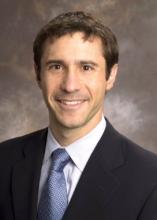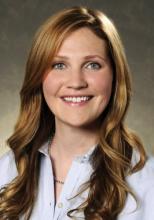Are the physicians and nurses in your hospital suffering from change fatigue?
There’s a new model of care that supporters say could help alleviate the weariness from continual quality improvement projects and process changes. It’s called an Accountable Care Unit, and though the name sounds a lot like an Accountable Care Organization, the two ideas have little in common.
Accountable Care Units (ACUs) are essentially geographic-based hospital units where the staff are held accountable for their patients’ outcomes. The four defining features of an ACU are unit-based teams, structured interdisciplinary bedside rounds, unit-level performance reporting, and unit-level nurse and physician coleadership.
Under this collaborative care model, hospitalists are assigned to a "home" unit where nearly all of their patients are located. The physician-leader partners with a nurse-manager to run the unit, and together with a team that includes allied health professionals, they conduct daily bedside rounds. A unique piece of the ACU model is the accountability. Instead of trying to discern performance based on facility-level or physician service line data, the hospital provides the ACU with unit-level data to help improve outcomes.
ACUs, which are the brainchild of hospitalist Dr. Jason Stein at Emory University in Atlanta, are currently up and running in multiple units across the Emory system, along with hospitals in seven U.S. states and more than 15 hospitals in Australia. The care model can be found in medical units, surgical units (including neurosurgery, orthopedic surgery, and general surgery), intensive care units, emergency departments, obstetrics units, pediatric units, psychiatry units, and long-term acute care units.
To help hospitals launch ACUs across their facilities, Dr. Stein founded Centripital, nonprofit organization whose mission is to train hospital professionals to work together in "high performing, patient-centered teams." The company has licensed implementation tools, including customized workflow diagrams, comprehensive training for front-line staff, and a train-the-trainer program with feedback tools so local leaders can spread the success of an initial ACU within their system.
Dr. Stein describes the model as a "Swiss Army knife" for the hospital. The idea is that instead of constantly ramping up for the next quality improvement project, the structure of the ACU allows physicians and nurses to target improvements without fundamentally changing their workflow.
"Whatever the metric is, whether it’s a clinical outcome or a utilization outcome, ... if you choose to focus on any of those items, we think you’re very likely to improve those outcomes," said Dr. Stein, who is the director for quality and research in Emory’s division of hospital medicine.
Dr. Stein launched the first ACU in 2010 in a 24-bed medical unit at Emory University Hospital. During the first year, the length of stay fell from an average of 5 days to 4.5 days. And in-hospital mortality dropped from 2.3 deaths per 100 encounters to 1.1 deaths. Initial results also have been similar in other hospitals that have launched ACUs, he said.
Costs, continuity, and ‘accountability’
At Emory, the gains were achieved at little cost to the system, Dr. Stein said, other than compensation for a part-time physician medical director and some staff training.
The biggest challenge in making the shift to an ACU model of care is the creation of unit-based teams, he said. "Physicians need to be able to share time and space throughout the day with the nurses with whom they share patients," Dr. Stein said.
One potential downside to making geography the primary driver of how physicians are assigned to patients is that there can be a break in the continuity of care. For example, if a patient cared for in an ACU must be transferred to the intensive care unit, after recovery the patient could potentially be transferred to a unit with a different team of physicians.
But Dr. Stein said it’s a manageable problem and one that is worth the trade-off.
Accountability on an ACU has multiple meanings. The first level of accountability is between members of the care team.
"There’s accountability at the bedside every day, because we are either showing up prepared to offer perspectives and answer questions in a structured way, or we’re not," Dr. Stein said. "That’s a massive daily accountability moment."
The second level comes from being able to review data that’s specific to the ACU. Dr. Stein recommends that ACU teams hold quarterly meetings that include specialty directors and service line chiefs to review unit-level performance reports. That type of public reporting among peers can be very powerful, he said.
The structure of the ACU model or a similar version of it "is probably the type of model that will make the most sense for the future," said Dr. Elizabeth Harry, a hospitalist at Presbyterian/ St. Luke’s Medical Center in Denver.


